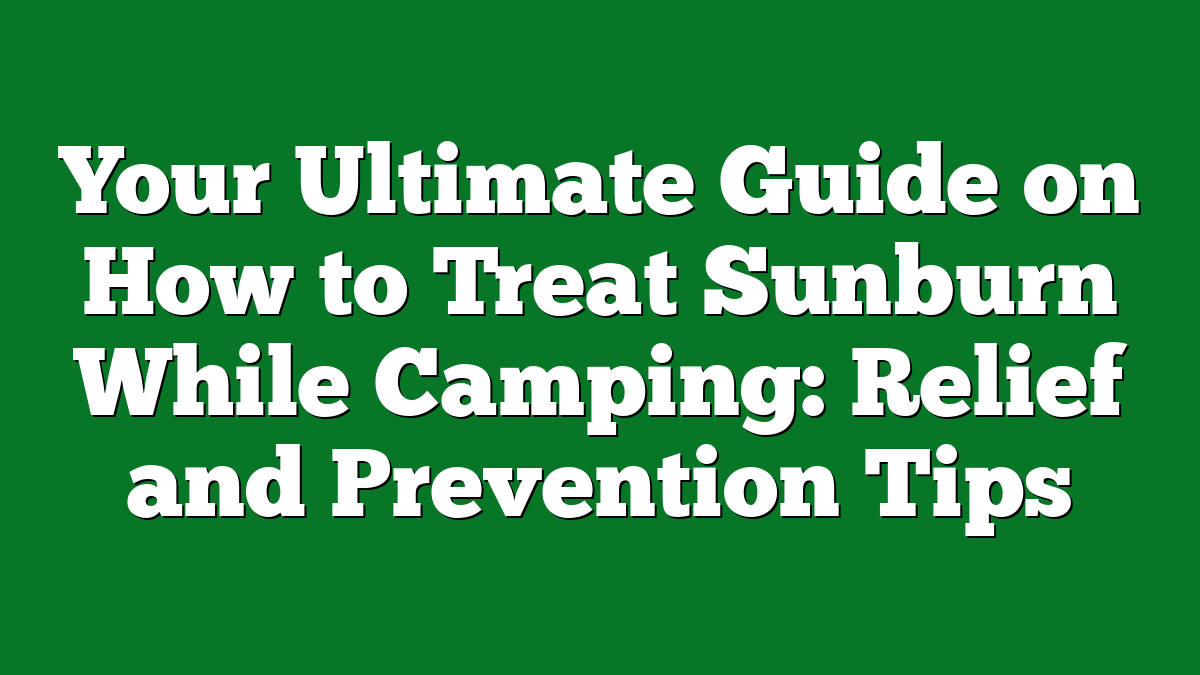Spring is a magical time to hit the great outdoors, but it often brings unpredictable weather. As the flowers bloom and the trees regain their leaves, you might find yourself facing those pesky early spring showers. Don’t let a little rain dampen your camping spirit! With the right preparation and mindset, you can enjoy the serenity of nature while staying safe and dry.
Understanding Early Spring Weather Patterns
Early spring brings a mix of excitement and uncertainty for outdoor enthusiasts. Knowing how to navigate the weather can make all the difference in your camping experience.
Importance of Forecasting
Forecasting plays a crucial role in early spring camping. I always check reliable sources like the National Weather Service or local meteorologists for updates. Short-term forecasts show precipitation chances, while extended forecasts help me plan for temperature fluctuations and potential storms. Knowing what to expect allows me to pack the right gear and avoid surprises. Always look for real-time alerts, as conditions can change rapidly in spring.
Recognizing Rain Risks
Recognizing rain risks is vital for a safe camping trip. I pay attention to signs like darkening clouds, sudden temperature drops, and increased wind. These can indicate incoming rain, which might lead to flash floods in certain areas. Spring showers can sometimes evolve into severe thunderstorms. I consider factors like my campsite’s elevation and proximity to water sources, as these affect my safety. Staying alert and informed helps me make smart decisions and adapt as needed.
Essential Gear for Rainy Camping
Proper gear makes all the difference when camping in early spring rain. I rely on specific items to keep me dry and comfortable, ensuring an enjoyable outdoor experience despite the wet weather.
Waterproof Tents and Tarps
Investing in a waterproof tent is crucial. I choose tents with a high waterproof rating, like 1500 mm or more, to withstand heavy rain. Additionally, using a tarp to cover the entrance area creates a dry space for organizing gear. Stretching a tarp over the tent adds an extra layer of protection, keeping water from pooling on the roof.
Choosing the Right Footwear
Selecting the right footwear keeps my feet dry and comfortable. I opt for waterproof hiking boots with good traction, ensuring I can navigate slippery trails. Insulated or waterproof socks also add warmth and moisture management. Pairing boots with gaiters provides an extra barrier against splashes and mud.
Clothing Layering Strategies
Layering effectively keeps me warm and dry. I start with a moisture-wicking base layer to draw sweat away, followed by an insulating layer like fleece for warmth. A waterproof and breathable outer layer protects against rain while allowing moisture to escape. I also bring an extra pair of gloves and hats to keep my extremities warm in chillier conditions.
Setting Up Camp in the Rain
Setting up camp in the rain poses unique challenges, but with the right strategies, I can create a comfortable and dry space to enjoy my time outdoors.
Selecting the Right Location
Choosing a spot for my camp involves more than just finding level ground. I look for elevated areas that encourage water runoff, avoiding low spots where puddles can form. I also consider trees for natural shelter, but I steer clear of dead branches that could fall. Additionally, finding a location with good drainage, like sandy soil, helps keep my tent dry. If possible, I’ll set up near a water source for convenience, ensuring it’s a safe distance away to avoid flooding.
Proper Tent Setup Techniques
Setting up my tent correctly makes all the difference in staying dry. I first lay down a waterproof footprint or tarp to create a barrier between the wet ground and my tent. When I pitch the tent, I make sure it’s taut to prevent water from pooling on top. I orient the tent’s entrance away from the wind direction, reducing rain exposure. Lastly, I double-check that the rainfly is securely attached, ensuring all zippers are closed tightly to block moisture.
Creating a Dry Cooking Area
Cooking in the rain can feel like a daunting task, but with a dry area, I can whip up meals without hassle. I set up a tarp a few feet above my cooking area, propping it up with trekking poles or branches. This setup provides ample shelter and keeps my gear dry. I also keep my cooking equipment organized in dry bags, preventing moisture from seeping in. If possible, I avoid cooking inside the tent, but if that’s necessary, I use a portable stove and ventilate as much as possible to prevent condensation.
Staying Comfortable and Safe
Camping in early spring rain can be a challenge, but with the right strategies, I manage to stay comfortable and safe.
Managing Moisture Inside Your Tent
To keep moisture at bay inside my tent, I follow a few key practices. I place a waterproof footprint under my tent for extra protection against ground dampness. I also set up a small drying line inside for my wet gear using a paracord, helping keep it off the floor and allowing for better air circulation. Ventilation plays a crucial role, so I crack the tent’s ventilation openings to minimize condensation while maintaining warmth. Finally, I make sure to use breathable materials for my sleeping bag and liner, avoiding dampness from trapped moisture.
Cooking and Eating Safely in Wet Conditions
Cooking in rainy weather requires extra vigilance to ensure safety and efficiency. I set up a tarp over my cooking area to shield against rain. I keep my cooking gear in dry bags and use a portable stove instead of an open flame, as it’s safer and easier to control in wet conditions. I prepare quick, warming meals that require minimal cooking time, such as instant soups or pre-prepared meals. I also make sure to clean up promptly to avoid attracting wildlife, as food residue can pose risks even in a downpour.
First Aid for Weather-Related Issues
Weather can create health challenges, so I carry a reliable first aid kit tailored for outdoor conditions. I include items like adhesive bandages, antiseptics, and blister treatment supplies for potential injuries during rainy hikes. I also pack antihistamines and hydrocortisone cream, as damp conditions can trigger allergies and rashes. Maintaining hydration is vital, so I use water purification tablets if I can’t boil water. Staying aware of symptoms like hypothermia and frostbite keeps me alert, allowing me to act promptly if the weather takes a turn for the worse.
Conclusion
Camping in early spring rain can be a rewarding adventure if you’re well-prepared. I’ve learned that a positive attitude and the right gear can turn a potentially soggy experience into a memorable one.
By staying informed about the weather and choosing the right location for your campsite, you can make the most of your trip. Don’t forget to prioritize your comfort with proper clothing and gear.
With a little planning and a willingness to embrace the elements, you can enjoy the beauty of springtime outdoors, even when the skies are gray. So grab your gear and get ready for an unforgettable camping experience, rain and all!











